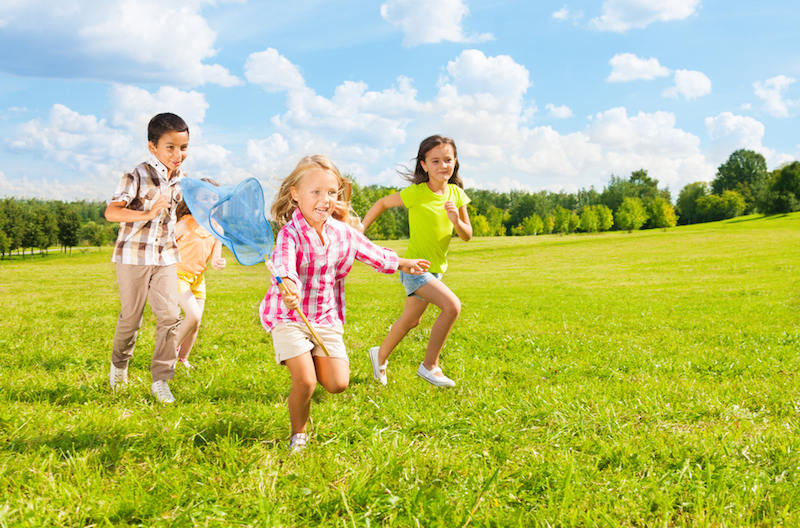Kids May See Better If They Play Outside

Children who spend more time outdoors may have a lower risk of becoming nearsighted, new research suggests.
In the study, researchers looked at about 1,900 schoolchildren in China. The scientists found that the kids who had been instructed to spend more time outdoors over three years were 23 percent less likely to develop nearsightedness during this time than those who had not been instructed to spend more time outdoors.
Moreover, among the kids who did become nearsighted during the study, the degree to which their eyesight worsened was slightly smaller among those who spent more time outdoors, the researchers found.
Although the study was conducted in China, the results likely apply to children elsewhere, too, said study author Dr. Mingguang He, of the Zhongshan Ophthalmic Center, in Guangzhou. Previous research has suggested "the protective effect of outdoor time in Australia and United States on children of European ancestry," he said.
In the study, the researchers selected six schools and assigned the children, whose average age was 7 at the study's start, to attend one additional 40-minute class of outdoor activities during each school day for three years. The parents of these children were also encouraged to engage their children in outdoor activities after school, especially during weekends and holidays. The other half of the children, from another six schools, continued their usual activity patterns. [10 Scientific Tips for Raising Happy Kids]
After three years, 30.4 percent of the kids in the intervention group had become nearsighted, compared with 38.5 percent of the kids in the control group, the researchers found.
The reduction in the risk of nearsightedness found in the study is important, because children who develop nearsightedness at a young age are most likely to develop worse myopia (the medical term for nearsightedness) later on, the researchers said. This means these children are at increased risk of "pathological myopia," which is a severe form of vision impairment.
Sign up for the Live Science daily newsletter now
Get the world’s most fascinating discoveries delivered straight to your inbox.
"Thus, a delay in the onset of myopia in young children, who tend to have a higher rate of progression, could provide disproportionate long-term eye-health benefit," the researchers wrote in their study, published today (Sep. 15) in the journal JAMA.
It is not clear exactly why spending more time outside would benefit children's eyesight, the researchers said. However, some research has suggested that the higher levels of light intensity found outdoors may increase the release of the chemical dopamine from the retina of the eye, He said. In turn, dopamine is known to inhibit the type of growth in the eye that is associated with myopia, he said.
Based on the new results, the researchers recommend that children spend more time outdoors because of the potential benefits to their eyesight, He said. "In fact, in order to maximize the benefit, we should further increase the outdoor time by using school recesses and encouraging parents bring their children outside on weekends, He said.
However, it's important to protect kids' skin and eyes from UV light, which can be damaging, he noted. The American Academy of Pediatrics recommends that children stay in shaded areas when possible, wear a hat or cap, and use broad-spectrum sunscreen.
"Given the popular appeal of increased outdoor activities to improve the health of school-aged children in general, the potential benefit of slowing myopia development and progression by those same activities is difficult to ignore," Dr. Michael X. Repka, a pediatric ophthalmologist at the Johns Hopkins University School of Medicine, Baltimore, who was not involved in the study, wrote in an editorial accompanying the study in the journal.
But parents should understand that any benefit to children's eyesight of spending more time outside "is likely to be small," and it is uncertain how long this benefit may last, Repka wrote.
Follow Agata Blaszczak-Boxe on Twitter. Follow Live Science @livescience, Facebook & Google+. Originally published on Live Science.









